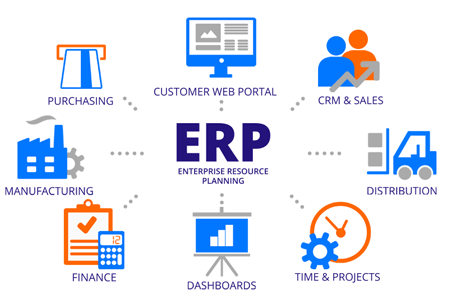THANK YOU FOR SUBSCRIBING
Learn to Use ERP in Lean Manufacturing Environments
With a little know-how and effort, businesses can actively combat sources of unnecessary waste by using ERP software and eliminating outdated processes.

By
Apac CIOOutlook | Tuesday, June 25, 2019
Stay ahead of the industry with exclusive feature stories on the top companies, expert insights and the latest news delivered straight to your inbox. Subscribe today.
With a little know-how and effort, businesses can actively combat sources of unnecessary waste by using ERP software and eliminating outdated processes.
FREMONT, CA: Lean manufacturing originated in Japan and popularized worldwide for minimizing waste without sacrificing the productivity of a manufacturing system. The major hindrances in cost-effective companies are waste produced from inefficient utilization of enterprise resource planning (ERP) platforms. However, by leveraging the ERP platform, a company can attain lean manufacturing environments.
Motion Waste Management
The displacement or movement of items from one area to another by neglecting the value of consumer goods generates transport waste. The transport waste specifically occupies the operator's skills, tools, and vehicles without any positive contribution toward productive work. To eliminate the collection of transport waste in ERP platform, the management team need to access tools to help logistics and regulate production. The proper engineering tool restricts the useless movement of goods from one location to another. The instantaneous data generation capability of ERP in the inventory level unlocks visibility of stored devices and plan orders accordingly.
See Also: Top ERP Solution Companies
Waiting and Over Productivity
Raw material, stacked goods, finished products should be maneuvered fluently for an undisturbed waste-free manufacturing ecosystem. The microscopic vitality nature of inventory waste makes producers and managers overlook the inventory checking process entirely. The negligence of the management team and inventory workers on finished stacked up materials cause the company to make vital mistakes in the profit calculation process. The best ERP systems, with its integrated support of just-in-time (JIT) functionality, implement an efficient inventory forecasting system and also checks stock levels.
Overprocessing
Poor productive layout causes a distraction to a specific process and further lowers the functionality and the flow of the production process. The unplanned movement of workers causes an unproductive dissipation of energy and time. The progression of operations based on a constant well-sorted layout by ERP platform excludes unwanted wear and tear of machinery due to motion waste.
Robust manufacturing ERP systems possess the ability to take quick decision and provide an ending to the informative loopholes. As technology continues to improve, a smooth assembly line is a vital factor which differentiates the chronological companies from a fabricated organization. The integration of overproduced stacks causes a notable hindrance to the supply chain leading to an overpopulation problem. The active ERP works not only act as a single data source for canceling overpopulation but also to improve manufacturing quality by pinpointing manufactory defects.
Check Out: The Manufacturing Outlook





